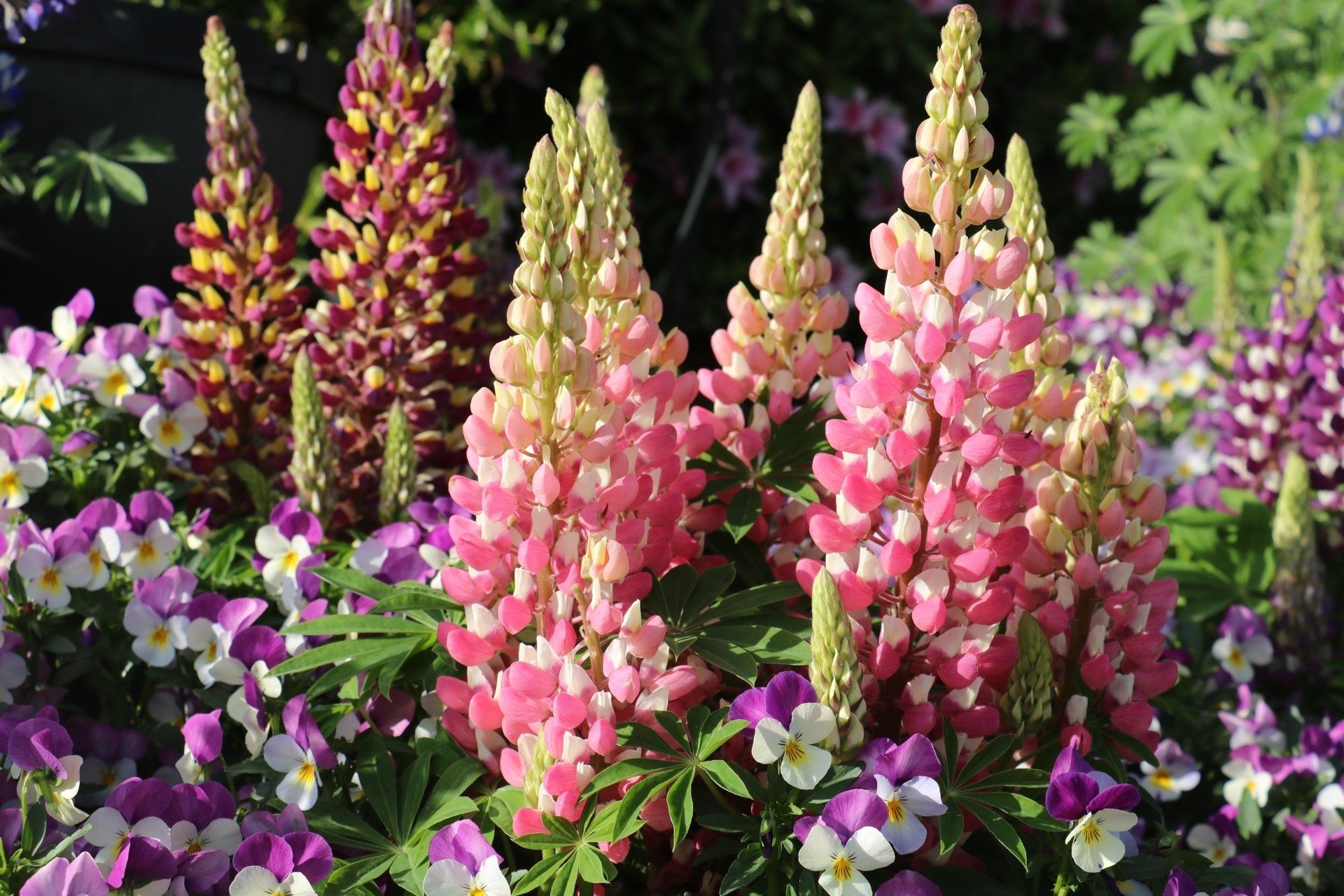Lupin
KEY INFORMATION
Height: to 100cm
Spread: to 50cm
Hardy perennial
Sun or semi-shade
Germination: 15 - 21 days, in some circumstances up to 60
VARIETIES AVAILABLE FROM COLLIE FLOWERS
SOWING & GROWING SCHEDULE
Sow Indoors: February to April, or September
Sow Outdoors: n/a
Plant Out: April to July
Blooms: May to August

Growing Guide
Lupins are a true cottage garden flower. There is little to rival a mass planting of lupins with their tall spikes glowing with colour in May, June and July. Growing Lupins from seed is a much more cost-effective way to grow these stunning flowers, when compared to buying them as established plants!
Sow Lupin seeds from February to April on the surface of a good quality, free draining compost and lightly cover with a fine sprinkling of compost or vermiculite. Place the seed tray in a propagator seal inside a clear polythene bag until the first seedlings show. Don’t exclude light as this helps germination. Keep the compost damp but not wet. In some conditions, Lupins can take up to 60 days to germinate.
When seedlings are large enough to handle, transplant into 7.5cm pots and grow Lupin plants on in cooler conditions. When all risk of frost has passed, gradually acclimatise to outdoor conditions over 7 - 10 days before planting outdoors. Plant Lupins at a distance of 40cm apart on any well-drained soil in a sunny or semi shaded position. Feed and water regularly until plants are fully established.
To get a head start on the next growing year, you can also sow Lupins as above in September, and overwinter them in a cold frame and plant out the following spring.
TOP TIPS
Like many other perennials with tall flowers, lupins benefit from a sheltered position. Grow them towards the back of a border. Avoid planting them in containers as they grow weakly and can be susceptible to aphid attacks – they grow much better in the ground.
Deadhead lupins once flowers have faded and you should be rewarded with a second flush of flowers. In autumn, cut lupins right back to the ground after collecting seed. Lupins do not come true to type from seed, so lupins grown from collected seed are likely to flower in a mix of colours.
CAUTION: Lupin seeds are harmful if eaten.
